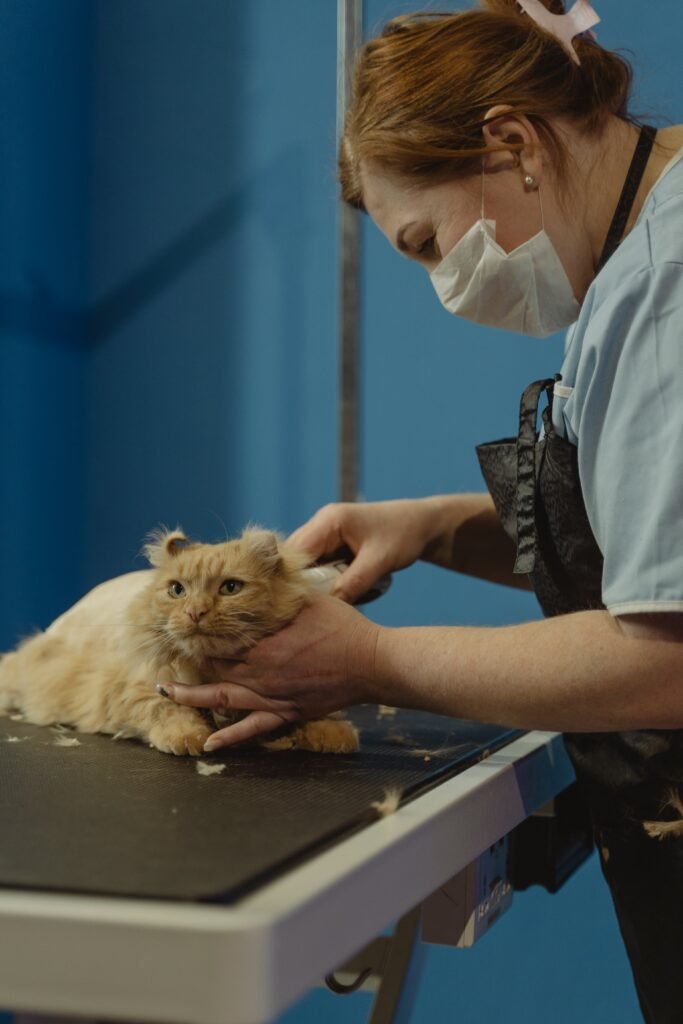Periodontal disease is a common issue for many cats, but it’s often overlooked. It affects the gums and teeth, and if left untreated, it can lead to serious health problems. Keeping your cat’s mouth healthy is important, just like it is for humans. This post will explain what periodontal disease is, how to spot the signs, and what you can do to prevent it.
Stages of Periodontal Disease
Periodontal disease in cats comes in stages, starting with gingivitis and progressing to periodontitis if not treated.
- Gingivitis: This is the early stage where the gums become inflamed due to plaque buildup. It can be reversed with proper care if caught early.
- Periodontitis: In this advanced stage, the infection spreads to the tissues and bones supporting the teeth, which may lead to tooth loss and more serious health issues.
Signs and Symptoms of Periodontal Disease in Cats
It’s important to keep an eye on your cat’s behavior and appearance for signs of periodontal disease. Symptoms include:
- Bad breath: This is one of the first signs. If your cat’s breath smells unusually foul, it could be a sign of a dental problem.
- Red or swollen gums: Look for gum inflammation or bleeding.
- Difficulty eating: Cats with periodontal disease may struggle to eat or chew, and you might notice a decrease in their appetite.
- Pawing at the mouth or face: If your cat is repeatedly pawing at its face or mouth, it could indicate pain or discomfort from dental issues.
Causes of Periodontal Disease in Cats
Several factors can lead to periodontal disease in cats:
- Plaque buildup: Plaque forms naturally on the teeth from food particles. If it’s not removed, it hardens into tartar, which can cause infection.
- Lack of dental care: Cats rarely have their teeth brushed, allowing plaque and tartar to build up.
- Age and genetics: Older cats are more prone to dental problems, and certain breeds may have a genetic predisposition.
- Diet and feeding habits: Wet food, for instance, sticks to the teeth more than dry food, leading to faster plaque buildup.
How Periodontal Disease Affects a Cat’s Health
While periodontal disease starts in the mouth, it can affect other parts of your cat’s body if left untreated. The bacteria from infected gums can spread to other organs, potentially causing serious conditions like heart, kidney, or liver disease. In advanced stages, cats may lose teeth, which can affect their ability to eat properly.
Diagnosing Periodontal Disease in Cats
Early diagnosis is key to managing periodontal disease. Regular vet check-ups should include dental exams to spot any signs of gum disease. If your vet suspects periodontal disease, they might take X-rays to see the condition of the teeth and bones below the gums, as not all issues are visible to the naked eye.
Treatment Options for Periodontal Disease
If your cat has periodontal disease, treatment will depend on the severity:
- Professional cleaning: This is usually the first step, where the vet removes plaque and tartar buildup.
- Tooth extractions: In severe cases, infected or damaged teeth may need to be removed to prevent further complications.
- Antibiotics: These may be prescribed if there’s an infection present.
Preventing Periodontal Disease
Preventing periodontal disease is easier than treating it. Here are some ways to keep your cat’s teeth and gums healthy:
- Regular brushing: Use a toothbrush and toothpaste designed for cats. Start slow and be patient.
- Dental treats and toys: Some cat treats and toys are designed to help clean teeth and gums as your cat chews.
- Routine vet visits: Your vet can provide professional cleanings and advice on how to maintain your cat’s oral health.
Home Care Tips for Cat’s Dental Health
Taking care of your cat’s teeth at home can go a long way. Here are some tips:
- Brushing your cat’s teeth: Start by letting your cat get used to the toothpaste. Then, gently brush their teeth in small, circular motions.
- Choosing the right cat toothpaste: Never use human toothpaste for your cat. Always pick a product made specifically for cats, as they are safer and often flavored to appeal to pets.
- Using dental chews or toys: These can be a fun way for your cat to help keep their teeth clean naturally.
Related Health Risks of Untreated Periodontal Disease
If left untreated, periodontal disease can lead to severe health problems beyond the mouth. The infection can enter the bloodstream and cause systemic issues, like heart disease, kidney disease, or liver problems. This is why early treatment and prevention are crucial.
Is Periodontal Disease More Common in Older Cats?
Yes, older cats are more likely to develop periodontal disease. As cats age, their teeth and gums become more vulnerable to plaque and tartar buildup. Older cats may also be less interested in chewing hard food or toys that can naturally clean their teeth. For senior cats, regular dental checkups are essential to maintain good health.
When to See a Vet
If you notice any signs of periodontal disease, such as bad breath, red gums, or difficulty eating, it’s important to visit your vet as soon as possible. Early intervention can prevent the disease from worsening. During the visit, your vet may perform a dental cleaning or, in severe cases, recommend tooth extractions.
Conclusion
Periodontal disease is a serious but often overlooked issue in cats. Regular dental care, including brushing, dental treats, and vet check-ups, can help prevent it. Keeping your cat’s teeth and gums healthy will not only improve their quality of life but also protect them from more severe health issues in the future.
FAQs
1. How often should I brush my cat’s teeth?
You should aim to brush your cat’s teeth at least 2-3 times a week. Regular brushing helps prevent plaque buildup and keeps their gums healthy.
2. Can my cat’s diet help prevent periodontal disease?
Yes, certain dry foods can help reduce plaque buildup, while dental treats and toys are also effective. Wet food tends to stick to the teeth more, so regular brushing is important.
3. Are certain cat breeds more prone to periodontal disease?
Some breeds, especially smaller breeds like Persians and Siamese, may be more prone to dental issues due to the shape of their jaws and teeth.
4. What are the best dental treats for cats?
Look for treats specifically designed for dental health. They often have a crunchy texture that helps remove plaque as your cat chews.
5. How often should my cat get a professional dental cleaning?
It depends on your cat’s age and dental health, but most cats should have a professional dental cleaning once a year or as recommended by your vet.


